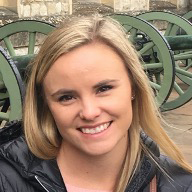What’s the Difference Between a Registered Nurse and a Nurse Practitioner?


Registered nurses (RNs) and nurse practitioners (NPs) both provide patient care, but there are significant differences between these two important nursing roles. While RNs provide direct care to patients in a variety of settings, NPs hold a graduate degree and can take on additional tasks such as diagnosing patients and, in many states, prescribing medication.
In this Article
Roles and Responsibilities | Workplaces | Specialties | Education | Licenses and Certifications | Salaries | Which Job is Right for Me?
“Nurse practitioners focus on health promotion and illness prevention to inform their practice as an independent healthcare provider,” says Erin M. Alving, MSN, ARNP, CDCES, a pediatric nurse practitioner and diabetes educator at Seattle Children’s Hospital. “One can build on the physical assessment skills and patient care interactions learned as a registered nurse to strengthen their nurse practitioner practice.”
RN and NP Roles and Responsibilities
While both registered nurses (RNs) and nurse practitioners (NPs) focus on patient care, the key distinction lies in their scope of practice. Nurse practitioners, in addition to providing patient observation and care, have the authority to diagnose patients, prescribe treatments, and order tests—responsibilities typically performed by physicians. On the other hand, registered nurses do not have the same prescribing and diagnostic capabilities as nurse practitioners.
Registered nurses can be found in just about every healthcare setting and provide direct care to patients. Responsibilities can vary widely depending on where you work. “Many of your daily responsibilities or duties as a nurse are going to depend largely on your specialty or what floor you work on,” says Alaina Ross, RN, BSN, a full-time RN with more than 10 years of experience. “For example, an ICU nurse is going to have a very different set of daily tasks than a school nurse,” Ross says.
However, there are some duties RNs share across specialties and workplaces, such as:
- Counseling patients and their family members
- Checking patient vitals
- Administering medications
- Charting patient data and behavior
- Managing other medical professionals, such as CNAs, medical assistants, and nurse aides
“But I would just say that your greatest responsibility, no matter what, is patient care,” says Ross. “As an RN, you’re the primary point of contact for a patient in any setting, so making sure patients feel comfortable, safe, and at ease is your biggest duty.”
Nurse practitioners have an advanced scope of practice and can take on a wider range of duties. They can act as primary care providers in a variety of settings and specialties. In some states, NPs even run their own medical offices. This can make care more accessible for people who have trouble accessing large medical practices, such as those who live in rural areas or underserved urban areas. NPs deliver primary care from a nursing perspective that is focused on education, wellness, and preventive measures.
The exact responsibilities of an NP will depend on their specialty, work setting, and state. While many states allow NPs to work completely independently, some states require NPs to work under the supervision of a physician. Similarly, some states grant NPs prescriptive authority (the ability to write prescriptions for medications) but other states do not.
Typical responsibilities of NPs across states and specialties include:
- Providing primary care to patients within the scope of practice allowed in their state
- Diagnosing illnesses, injuries, and infections
- Performing in-office treatments for acute injuries and infections
- Ordering and reviewing the results of diagnostic tests, such as electrocardiograms (EKGs) and X-rays
- Gathering thorough patient data for patient records
- Designing treatment plans for each patient
- Educating patients about their health
- Prescribing medication in states that grant prescriptive authority to NPs
Direct Care vs. Primary Care: What’s the Difference?
One of the biggest differences between RNs and NPs is that RNs are responsible for direct patient care, while NPs are responsible for primary patient care. What makes each type of care distinct? Direct care is care patients receive to address a need, relieve pain, or treat a condition. For example, when an RN cleans and applies prescription creams to a wound before carefully covering it, they are providing direct care.
Primary care is care that assesses, diagnoses, and orders treatments for injuries or illnesses. When an NP diagnoses a patient and writes a prescription, they are providing primary care. Often, primary care and direct care go hand-in-hand. An NP providing primary care might write prescriptions for a medication or treatment, and an RN providing direct care might administer medication or treatment.
Workplaces
You likely think of hospitals or medical offices when you think of workplaces for either RNs or NPs. While those standard workplaces are always an option, they’re not your only choice. RNs and NPs can find work in a wide variety of healthcare settings.
RNs can find work in:
- Hospitals
- Specialty clinics
- Health systems
- Medical offices
- Mental health facilities
- Rehabilitation facilities
- Community health clinics
- Home healthcare agencies
- Long-term care facilities
- Urgent care centers
- Health insurance companies
- Law offices
- Correctional facilities
- Colleges and universities
- Schools
- Athletic facilities
NPs can find work in:
- Hospitals
- Specialty hospitals
- Health systems
- Medical offices
- Independent practice
- Community health clinics
- Long-term care facilities
- Urgent care centers
- Health insurance companies
- Corporations and industrial complexes
Experienced NPs can also find work in specialty care centers. Specialty care is healthcare that goes in-depth on a specific condition. This is different from primary care, which is focused on overall health and wellness.
“NPs have many opportunities in specialty care in addition to primary care,” says Alving. “For example, my practice is in the specialty of pediatric endocrinology. Most of my colleagues also work in specialty care.”
Specialties
RNs and NPs specialize in different areas of care. For RNs, this often means specializing in patient care delivered in a specific unit or medical setting. For NPs, this means specializing in the population you’ll provide care to.
Common RN specialists and the type of care they provide:
- Medical-surgical nurses work in hospitals providing care to patients after procedures.
- Critical care nurses treat and stabilize patients with acute injuries or illnesses.
- Operating room nurses prepare patients for surgery and help keep them safe and comfortable before, during, and after their procedure.
- Pediatric nurses provide care to injured or ill babies and children, generally in hospital settings.
- Emergency room nurses treat patients seeking emergency care in a hospital setting.
- Labor and delivery nurses provide care before, during, and after the childbirth process.
- Home health nurses visit patients in their homes to assess their progress and administer treatments and medications.
- School nurses manage the health and wellness of students in one or more schools.
Unlike RNs, NPs are required to choose a specialty before they can earn licensure. Some common NP specializations and the care they provide:
- Family nurse practitioners (FNP)s provide primary care to patients of all ages and offer education, counseling, and more to the patients they see.
- Adult nurse practitioners provide primary care such as assessments, diagnoses, and treatments for adults.
- Geriatric nurse practitioners work with older adults and their families by providing primary care and education.
- Pediatric nurse practitioners provide primary care to children ranging from a few months old to teenagers.
- Neonatal nurse practitioners provide advanced care in labor and delivery units and in neonatal ICUs.
- Women’s health nurse practitioners provide primary care with an emphasis on reproductive and gynecological health.
- Acute care nurse practitioners provide advanced care to injured or ill patients in hospital or urgent care settings.
What Degree does Each Job Require?
There are a few paths to nursing licensure at either the RN or the NP level. Aspiring RNs can choose from an Associate Degree in Nursing (ADN) or Bachelor of Nursing Science (BSN) degree. Either degree will prepare you to take the NCLEX-RN and apply for licensure in your state. The path to RN licensure is up to you. An ADN can generally be earned in half the time and might be much less expensive. However, a BSN might prepare you for higher-level roles and help you advance your career.
RNs can earn an ADN or a BSN. An NP must hold a master’s or doctoral degree.
Conversely, you’ll need at least a Master of Science in Nursing (MSN) degree to earn NP licensure, and it’s not uncommon to earn a Doctor of Nursing Practice (DNP) degree. In fact, it’s likely that a DNP will soon be required.
Several nursing organizations, including the American Association of Colleges of Nursing and the National Organization of Nurse Practitioner Faculties (NONPF), have announced support for the DNP becoming the entry-level degree for NPs in the near future.
For now, you can choose either an MSN or DNP as a path to NP licensure. You’ll need an RN license in good standing to enter an MSN program. Some programs will ask that you have a BSN, but some schools offer RN-to-MSN bridge programs that allow students with ADNs to enroll.
You can also go directly from a BSN to a doctorate through a BSN-to-DNP bridge if you know that’s the path you want to take. Once you figure out the structure and program that works for you, you can choose a specialty and begin your NP education.
You don’t always need years of RN experience to enter an MSN or DNP program, but it can be a huge help.
“Most NPs have some RN experience,” says Alving. “For me, having some RN experience was important in preparing me for the NP role. However, there are many talented and competent NPs who were direct entry into NP programs with no RN experience.”
Licenses and Certifications
Both RNs and NPs need to be licensed before they can work.
Pathways
Becoming an RN:
- Earn your ADN or BSN degree
- Take the NCLEX-RN
- Apply for licensure in your state
Becoming an NP:
- Earn your RN license
- Earn your MSN and/or DNP degree
- Take a certification exam in your specialty
- Apply for licensure in your state
RN Requirements
RNs must complete an educational program, pass the NCLEX-RN exam, and get licensed before they can practice. Most states will also ask for information such as a criminal background check and complete educational record when you apply for licensure. Once you’re working, you’ll need to take steps to maintain your RN license through continuing education classes.
RNs aren’t required to earn specific certifications. However, there are multiple certifications available, and earning them is a smart career move. Certification is a great way to prove your dedication and demonstrate your education and skills to employers. They can help you advance your career.
The right certification for you is often the one best aligned with your specialty. There are certifications for critical care RNs, emergency room RNs, operating room RNs, and more.
NP Requirements
NPs need to complete their MSN or DNP and then take the certification exam for their specialty. Certifications are offered by the American Association of Nurse Practitioners Certification Program (AANPCP), American Nurses Credentialing Center (ANCC), Pediatric Nursing Certification Board (PNCB), and National Certification Corporation (NCC).
Once you’ve taken and passed the certification exam in your specialty, you can apply for licensure in your state. In some states, you’ll need to apply separately if you want prescriptive authority. You’ll then need to maintain both your certification and your state license to keep working as an NP. Requirements vary by certification and state, but normally involve both clinical practice and continuing education hours.
RN and NP Salaries
Both RNs and NPs are in high demand and are well paid for their education and experience. RNs earn a median income of $86,070, according to the U.S. Bureau of Labor Statistics (BLS). As you might imagine, NPs earn significantly more, thanks to their advanced responsibilities and education. You can compare median annual salaries nationally or by state below.
National data
Median Salary: $86,070
Projected job growth: 5.6%
10th Percentile: $63,720
25th Percentile: $75,990
75th Percentile: $104,670
90th Percentile: $132,680
Projected job growth: 5.6%
State data
| State | Median Salary | Bottom 10% | Top 10% |
|---|---|---|---|
| Alabama | $65,900 | $50,310 | $92,870 |
| Alaska | $106,410 | $82,980 | $132,090 |
| Arizona | $88,310 | $70,060 | $109,750 |
| Arkansas | $72,920 | $45,200 | $96,040 |
| California | $133,990 | $83,510 | $194,240 |
| Colorado | $86,900 | $70,790 | $112,800 |
| Connecticut | $100,620 | $78,370 | $127,150 |
| Delaware | $93,200 | $73,800 | $122,670 |
| District of Columbia | $105,220 | $75,340 | $136,120 |
| Florida | $80,960 | $63,520 | $105,580 |
| Georgia | $83,620 | $63,450 | $124,330 |
| Hawaii | $129,210 | $81,070 | $145,940 |
| Idaho | $80,130 | $62,210 | $105,300 |
| Illinois | $82,470 | $63,900 | $105,140 |
| Indiana | $78,530 | $61,710 | $103,710 |
| Iowa | $71,570 | $61,250 | $90,800 |
| Kansas | $75,780 | $58,760 | $94,900 |
| Kentucky | $77,830 | $61,520 | $101,770 |
| Louisiana | $76,650 | $60,720 | $101,650 |
| Maine | $81,610 | $64,600 | $107,240 |
| Maryland | $89,340 | $66,880 | $114,440 |
| Massachusetts | $99,730 | $74,010 | $166,100 |
| Michigan | $81,710 | $67,450 | $101,610 |
| Minnesota | $97,300 | $73,050 | $120,420 |
| Mississippi | $69,370 | $54,580 | $100,160 |
| Missouri | $77,190 | $56,690 | $99,330 |
| Montana | $79,170 | $64,530 | $104,970 |
| Nebraska | $78,100 | $61,770 | $99,410 |
| Nevada | $96,210 | $77,160 | $132,010 |
| New Hampshire | $86,620 | $66,620 | $109,930 |
| New Jersey | $100,160 | $77,700 | $127,750 |
| New Mexico | $83,970 | $68,120 | $124,800 |
| New York | $104,570 | $69,450 | $136,780 |
| North Carolina | $79,580 | $62,980 | $104,190 |
| North Dakota | $74,930 | $63,920 | $95,680 |
| Ohio | $79,940 | $64,480 | $105,380 |
| Oklahoma | $78,760 | $61,360 | $101,390 |
| Oregon | $110,940 | $86,730 | $136,950 |
| Pennsylvania | $82,780 | $64,820 | $109,740 |
| Rhode Island | $94,840 | $69,350 | $116,510 |
| South Carolina | $78,380 | $60,780 | $98,980 |
| South Dakota | $67,030 | $54,780 | $85,400 |
| Tennessee | $76,200 | $55,510 | $98,090 |
| Texas | $85,110 | $64,580 | $115,740 |
| Utah | $79,790 | $64,950 | $102,000 |
| Vermont | $81,900 | $65,390 | $110,680 |
| Virginia | $84,100 | $63,710 | $115,120 |
| Washington | $107,720 | $82,630 | $139,390 |
| West Virginia | $78,730 | $50,650 | $99,440 |
| Wisconsin | $83,300 | $69,240 | $105,110 |
| Wyoming | $79,970 | $62,400 | $105,800 |
Source: U.S. Bureau of Labor Statistics (BLS) 2023 median salary; projected job growth through 2032. Actual salaries vary depending on location, level of education, years of experience, work environment, and other factors. Salaries may differ even more for those who are self-employed or work part time.
National data
Median Salary: $126,260
Projected job growth: 44.5%
10th Percentile: $94,530
25th Percentile: $106,960
75th Percentile: $140,610
90th Percentile: $168,030
Projected job growth: 44.5%
State data
| State | Median Salary | Bottom 10% | Top 10% |
|---|---|---|---|
| Alabama | $103,830 | $82,340 | $136,190 |
| Alaska | $133,930 | $70,100 | $179,040 |
| Arizona | $130,960 | $99,220 | $165,930 |
| Arkansas | $109,330 | $93,880 | $136,280 |
| California | $164,050 | $86,190 | $227,310 |
| Colorado | $124,280 | $81,110 | $161,450 |
| Connecticut | $135,390 | $101,380 | $174,240 |
| Delaware | $130,260 | $106,420 | $164,600 |
| District of Columbia | $133,280 | $104,320 | $164,750 |
| Florida | $120,370 | $93,380 | $153,470 |
| Georgia | $119,490 | $91,770 | $165,140 |
| Hawaii | $129,160 | $100,880 | $165,240 |
| Idaho | $122,660 | $97,920 | $155,210 |
| Illinois | $126,950 | $98,650 | $160,930 |
| Indiana | $124,470 | $100,500 | $147,490 |
| Iowa | $126,620 | $104,930 | $164,250 |
| Kansas | $119,930 | $98,480 | $141,690 |
| Kentucky | $109,530 | $77,530 | $134,220 |
| Louisiana | $118,830 | $86,380 | $153,360 |
| Maine | $123,140 | $102,490 | $149,150 |
| Maryland | $127,990 | $87,810 | $163,650 |
| Massachusetts | $138,570 | $107,200 | $185,850 |
| Michigan | $122,040 | $98,290 | $140,400 |
| Minnesota | $131,000 | $105,490 | $160,060 |
| Mississippi | $110,540 | $85,990 | $157,050 |
| Missouri | $117,910 | $86,580 | $140,210 |
| Montana | $127,570 | $99,890 | $151,560 |
| Nebraska | $122,410 | $86,830 | $157,950 |
| Nevada | $138,780 | $109,530 | $204,510 |
| New Hampshire | $128,490 | $104,400 | $159,650 |
| New Jersey | $142,950 | $100,110 | $178,300 |
| New Mexico | $133,090 | $95,210 | $170,730 |
| New York | $137,630 | $100,510 | $180,690 |
| North Carolina | $121,450 | $96,630 | $145,600 |
| North Dakota | $124,040 | $105,040 | $159,740 |
| Ohio | $123,690 | $101,400 | $152,040 |
| Oklahoma | $124,070 | $78,870 | $161,100 |
| Oregon | $137,440 | $110,000 | $182,650 |
| Pennsylvania | $126,140 | $99,530 | $162,820 |
| Rhode Island | $128,720 | $109,300 | $166,460 |
| South Carolina | $112,510 | $95,660 | $140,160 |
| South Dakota | $119,410 | $96,260 | $149,650 |
| Tennessee | $105,420 | $53,450 | $132,190 |
| Texas | $126,580 | $98,160 | $165,340 |
| Utah | $123,200 | $83,070 | $171,000 |
| Vermont | $123,920 | $103,940 | $158,020 |
| Virginia | $123,950 | $84,740 | $153,400 |
| Washington | $141,040 | $113,460 | $181,720 |
| West Virginia | $108,830 | $82,540 | $147,250 |
| Wisconsin | $126,910 | $105,880 | $156,930 |
| Wyoming | $122,950 | $80,220 | $159,970 |
Source: U.S. Bureau of Labor Statistics (BLS) 2023 median salary; projected job growth through 2032. Actual salaries vary depending on location, level of education, years of experience, work environment, and other factors. Salaries may differ even more for those who are self-employed or work part time.
No matter which path you choose, nurses are in demand. The BLS is predicting 5.6% growth in RN roles through 2032. Some specialties are likely to see an even higher demand.
NPs are predicted to see even faster growth: a massive 44.5% increase in roles through 2032, according to the BLS. Primary care roles are opening up all around the country, and NPs will be needed to fill them.
Do RNs and NPs Ever Work Together?
RNs and NPs sometimes work together to provide quality patient care. This can happen in a variety of settings and situations.
“Similar to how MDs and RNs work together, NPs take on the medical decision making while RNs support patient care and carry out the medical plan,” says Alving.
“Not every RN works alongside nurse practitioners,” adds Ross, “but it does happen frequently in many settings. A lot of NPs work in family medicine or alongside internists, so the RNs in these settings often work with NPs daily. It’s not uncommon at all to see RNs working in tandem with NPs in family medicine private practices and urgent care centers.”
Which Job Is Right for Me?
The right path for you is a personal decision. You might consider factors such as the time and money you’re able to dedicate to your education, the types of nursing roles you want to hold, and the type of care you want to provide. It’s also a good idea to consider if an RN role or NP role is a better fit for your skill and personality.
“In my opinion, the best (RNs) are the ones that are organized, confident, and pay attention to the details,” says Ross. “So much of nursing is process-based, meaning working off checklists, and you can’t miss a single step. You must be detail-oriented and not mind charting. In addition, sometimes you need to make quick decisions and respond to difficult situations, so you have to be analytical and confident. You’ve got to be able to use your best judgment and move swiftly without trying to make everyone happy.”
As for NPs, Alving says, it’s important to have strong problem-solving and leadership skills, medical acumen, and a sense of inquiry. “Additionally, self-driven individuals who want to expand their medical knowledge and continue lifelong learning do best.”
With professional insight from:

Erin M. Alving, MSN, ARNP, CDCES
Pediatric Nurse Practitioner and Certified Diabetes Educator

Registered Nurse




